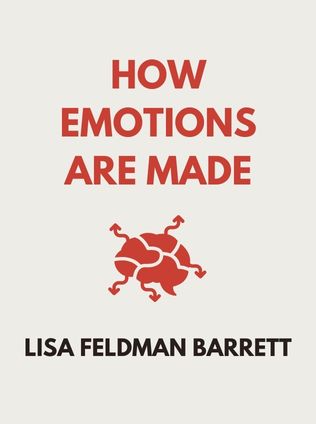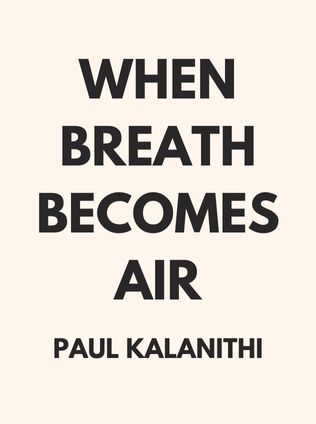
How Emotions Are Made
The Secret Life of the Brain
By Lisa Feldman Barrett
Published 03/2017
About the Author
Lisa Feldman Barrett, a distinguished neuroscientist and psychologist, has profoundly impacted our understanding of the human mind, particularly in the realm of emotions. She holds the title of University Distinguished Professor of Psychology at Northeastern University and maintains prestigious appointments at Harvard Medical School and Massachusetts General Hospital. In addition to these roles, she is the Chief Science Officer for the Center for Law, Brain & Behavior, and directs the Interdisciplinary Affective Science Laboratory, which has been instrumental in producing groundbreaking research on emotions.
Barrett’s work is characterized by its challenge to long-held beliefs about emotions. In her seminal book, "How Emotions Are Made," Barrett presents the theory of constructed emotion, a revolutionary idea that emotions are not hardwired or universally experienced. Instead, they are constructed by our brains, using a combination of past experiences, internal sensations, and external sensory inputs. This theory challenges the traditional understanding of emotions, suggesting that they are far more flexible and individualized than previously thought.
Published in 2017, "How Emotions Are Made" has been widely acclaimed for its novel approach to understanding emotions. Barrett’s theory has sparked significant discussion and debate in both academic circles and the popular press, positioning her as a leading figure in the ongoing exploration of the human mind and its emotional processes.
Main Idea
The central thesis of "How Emotions Are Made" is that emotions are not innate, universal responses that are hardwired into our brains. Instead, Barrett argues that emotions are constructed by our brains in the moment, using a combination of past experiences, cultural knowledge, and sensory inputs. This theory, known as the theory of constructed emotion, challenges many long-held beliefs about the nature of emotions, including the idea that specific emotions are tied to specific facial expressions or physiological responses.
Barrett’s theory suggests that our brains predict what will happen next based on past experiences, and these predictions, in turn, construct our emotional experiences. This perspective has profound implications for how we understand not only emotions but also mental health, illness, and personal responsibility.
Table of Contents
- Introduction to the Theory of Constructed Emotion
- The Science Behind Emotion Construction
- The Myths of Emotion
- Emotions Across Cultures
- The Role of Childhood and Development in Emotion
- Emotions, Illness, and Health
- Taking Responsibility for Your Emotions
- Practical Applications of Emotion Theory
1. Introduction to the Theory of Constructed Emotion
The theory of constructed emotion is a paradigm shift in how we understand emotions. Traditional views have long held that emotions are universal, innate responses that all humans share. These views suggest that emotions are biological reactions hardwired into our brains, triggered by specific stimuli in the environment. However, Barrett’s theory challenges this notion, arguing instead that emotions are not reactions at all but predictions constructed by our brains.
According to Barrett, emotions are created by the brain’s predictive nature. The brain is constantly making predictions about what will happen next based on past experiences. These predictions help the brain to manage the body’s resources efficiently, ensuring that it is prepared for whatever might come. Emotions, then, are not fixed responses but flexible constructions that vary depending on the situation and the individual’s past experiences.
"Emotions don’t happen to you; they’re made by you." – Lisa Feldman Barrett
This idea that emotions are constructed rather than hardwired has significant implications. It suggests that emotions are not universal but are deeply personal and variable. This variability is why two people can experience the same situation but have very different emotional reactions. One person might feel fear, while another feels excitement, depending on how their brain predicts and constructs the situation.
Barrett’s theory also challenges the idea that emotions are tied to specific facial expressions or physiological responses. For example, the traditional view might suggest that a racing heart always indicates fear. However, Barrett argues that the same physiological response could be associated with various emotions depending on the context and the individual’s past experiences.
2. The Science Behind Emotion Construction
Barrett’s theory of constructed emotion is grounded in decades of research in neuroscience and psychology. One of the key concepts in her theory is the idea of "body budgeting," which refers to the brain’s role in managing the body’s internal resources. The brain is constantly predicting what the body will need in the near future and adjusting its processes accordingly. This predictive process is essential for maintaining the body’s balance and ensuring survival.
In the context of emotions, body budgeting involves predicting how much energy the body will need to deal with a particular situation. For example, if the brain predicts that a situation will be stressful, it might construct an emotion like anxiety to prepare the body for the challenge. This construction involves releasing stress hormones, increasing heart rate, and mobilizing energy stores.
The brain’s predictive nature is central to how emotions are constructed. Rather than waiting for a situation to unfold and then reacting, the brain anticipates what will happen next and prepares accordingly. This process is far more efficient than reacting because it allows the brain to stay one step ahead, ensuring that the body is always prepared for what might come.
"The brain’s job is not to react but to predict." – Lisa Feldman Barrett
Sign up for FREE and get access to 1,400+ books summaries.
You May Also Like
The Subtle Art of Not Giving a F*ck
A Counterintuitive Approach to Living a Good Life
By Mark MansonHow To Win Friends and Influence People
The All-Time Classic Manual Of People Skills
By Dale CarnegieFreakonomics
A Rogue Economist Explores the Hidden Side of Everything
By Steven D. Levitt and Stephen J. DubnerQuiet: The Power of Introverts
The Power of Introverts in a World That Can't Stop Talking
By Susan Cain



















